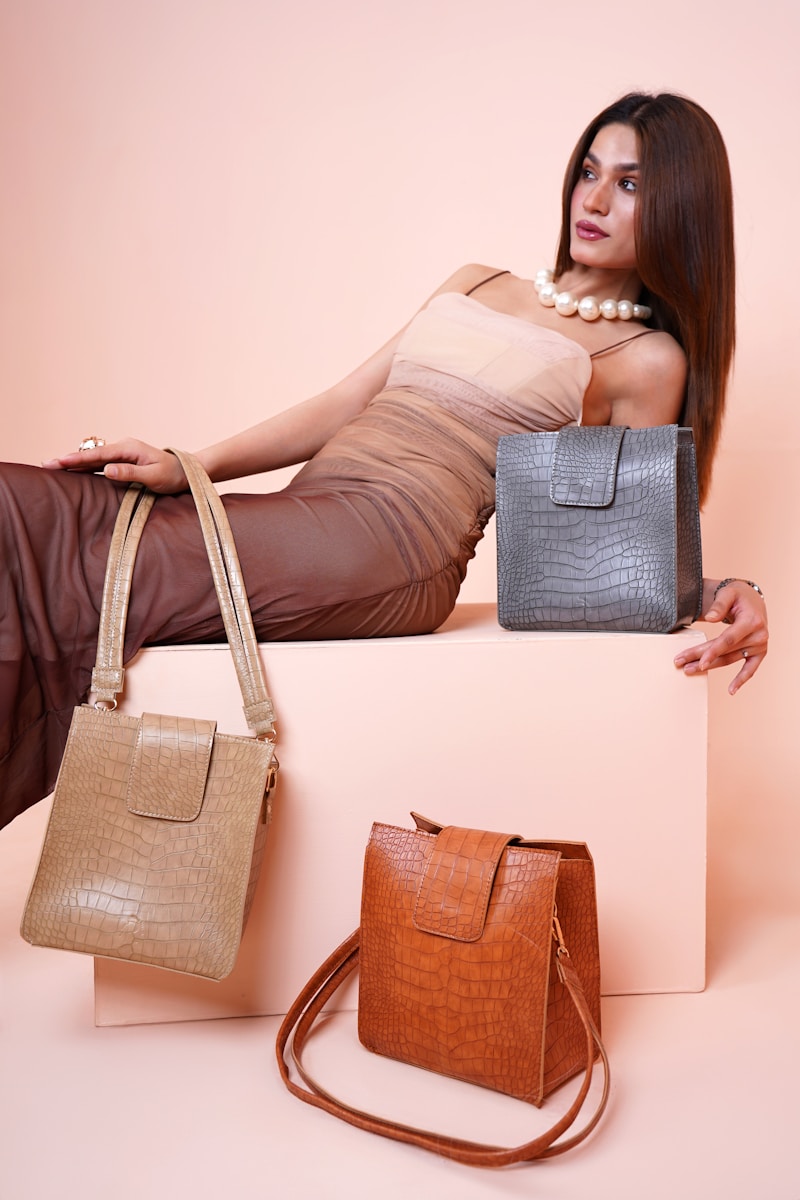Handbags have always walked the line between utility and artistry. They carry the daily essentials—wallets, keys, phones—yet they also announce something about the person holding them. For decades, the world of handbags has been dominated by recognizable silhouettes: the classic tote, the boxy satchel, the slouchy hobo. But in the 21st century, fashion has moved toward experimentation that treats handbags less as accessories and more as sculptures. At the heart of this shift is geometry. Circles, triangles, hexagons, and sharp-edged cubes are no longer confined to math textbooks or architectural blueprints—they have become the defining language of a new artistic era in handbag design.
This essay explores why geometric handbags are having their moment, tracing the history that led to this innovation, the aesthetic and psychological appeal of angular forms, and the practical considerations that make them both exciting and challenging.
From Function to Form
The handbag’s journey begins in practicality. Early pouches and reticules were utilitarian, designed to carry coins or tools. Over time, their construction reflected the needs of the era: small beaded purses for evenings, sturdy leather satchels for work, capacious totes for modern multitaskers. Yet even as function remained central, design slowly took precedence. By the 20th century, iconic houses like Hermès, Chanel, and Louis Vuitton elevated handbags into status symbols, where shape itself became as important as material.
Geometry is the natural extension of this evolution. In a world saturated with familiar silhouettes, sharper, more unconventional forms grab attention. When a handbag resembles a perfect cube or a deconstructed prism, it signals art rather than mere accessory.
The Language of Geometry
Geometric handbags thrive because shapes carry meaning. Just as in architecture or graphic design, different forms elicit distinct associations:
Circles suggest unity, infinity, and softness. A circular handbag feels playful, almost whimsical, while still strikingly modern.
Triangles evoke strength, dynamism, and movement. A triangular clutch suggests daring experimentation.
Squares and Rectangles embody order and balance. A cubic handbag feels stable and architectural.
Hexagons or Polygons suggest futurism and innovation, forms that feel ahead of their time.
When applied to handbags, these shapes transform them into objects of visual rhetoric. Carrying a geometric bag becomes a statement about personal style, creativity, and even philosophy.
Historical Roots of Geometric Influence
Although today’s geometric handbags feel revolutionary, they draw from earlier artistic movements.
Art Deco (1920s–30s): Known for angular designs and symmetry, this period introduced clutches and minaudières with rigid forms.
Bauhaus (1919–1933): The German school blurred art and function, celebrating geometric purity. The idea of a handbag as a functional sculpture owes much to Bauhaus ideology.
1960s Space Age Fashion: Designers like Pierre Cardin and André Courrèges embraced circles and futuristic mod shapes, planting seeds for playful handbag experimentation.
The current era builds on these precedents, but with contemporary materials and global design perspectives that push geometry to new extremes.
Why Geometry Resonates Today
Several cultural forces explain the rise of geometric handbags:
Architecture Meets Fashion
Cities filled with angular skyscrapers and bold modernist structures have inspired fashion to echo their lines. A handbag shaped like a cube mirrors the clean geometry of urban landscapes.
Minimalism with an Edge
Modern consumers crave simplicity but not boredom. Geometric handbags satisfy both impulses: they’re pared-back in ornamentation but bold in silhouette.
Social Media Aesthetics
On Instagram and TikTok, striking shapes stand out in feeds crowded with images. A triangular bag instantly photographs well, becoming a visual icon for digital audiences.
Rebellion Against Predictability
After decades of rectangular totes and bucket bags, geometry offers freshness. Carrying a hexagonal handbag is a way of resisting uniformity in style.
Designers Leading the Charge
Across the globe, established houses and emerging designers are embracing geometry:
Issey Miyake’s Bao Bao Bags: These tessellated, modular designs transform flat fabric into 3D geometric marvels that shift as the wearer moves.
Bulgari’s Serpenti Forever Line: While rooted in classic luxury, many designs feature sharp angular flaps and hexagonal motifs inspired by the serpent’s scales.
Cult Gaia: Known for architectural clutches and circular bamboo bags, the brand redefined how handbags could double as art objects.
Architectural Designers: Niche labels now create handbags resembling miniature buildings, treating them as wearable sculptures rather than accessories.
This cross-pollination of art, architecture, and fashion explains why geometry has become central to handbag innovation.
The Psychological Appeal of Shape
Beyond aesthetics, geometry works on a subconscious level. Shapes influence perception and mood, a principle long used in design psychology. Carrying a circular bag can feel lighthearted, while a rigid cube may project seriousness or authority. Triangular designs convey energy and forward momentum, appealing to those drawn to avant-garde style.
This explains why geometric handbags often spark conversation. They are tactile, visually stimulating, and subtly manipulative—encouraging both the wearer and the observer to see the handbag not merely as storage but as identity projection.
Practicality Versus Art
While striking, geometric handbags present challenges. Angled edges may reduce storage space, and rigid shapes can be less forgiving than slouchy designs. A triangular clutch might not fit a standard phone, and a cube-shaped bag may feel awkward under the arm. Yet, these impracticalities are often accepted, even celebrated, because they highlight the handbag’s artistic identity.
It mirrors the evolution of high heels: not always practical, but symbolic of style and expression. For many, geometric handbags are less about convenience and more about making a statement.
Everyday Integration
Despite their boldness, geometric handbags can blend into daily wardrobes with a few styling principles:
Neutral Tones for Balance: A cube bag in beige or black feels striking without overwhelming an outfit.
Use as Statement Pieces: Pair a geometric bag with minimal clothing—monochrome outfits or clean tailoring—to let the shape shine.
Smaller Sizes for Accessibility: Mini geometric clutches offer a taste of experimentation without committing to oversized drama.
With thoughtful styling, these handbags move from art object to wearable essential.
Sustainability and Geometry
Interestingly, geometric handbags also align with sustainability conversations. Their structured designs often require sturdier construction and high-quality materials, encouraging longevity. Some designers use modular or foldable geometric patterns that minimize waste in fabric cutting. Geometry, in this sense, isn’t only aesthetic but also an avenue for responsible craftsmanship.
A Cultural Shift Toward Objects as Art
The geometric handbag speaks to a larger cultural moment: the blending of fashion, art, and architecture. In an era where experiences are valued as much as possessions, handbags that feel like sculptures embody both. They become collectibles, not just accessories. Museums increasingly host exhibitions dedicated to handbags, recognizing them as cultural artifacts. Geometry cements their artistic legitimacy.
The Future of Geometric Handbags
Looking ahead, the trend is unlikely to fade. As technology advances, designers will experiment with 3D printing, unconventional materials, and collapsible geometric structures. Imagine handbags that shift shape depending on how they’re held—circles flattening into rectangles, cubes folding into prisms. Geometry offers infinite permutations, ensuring handbags remain canvases for imagination.



